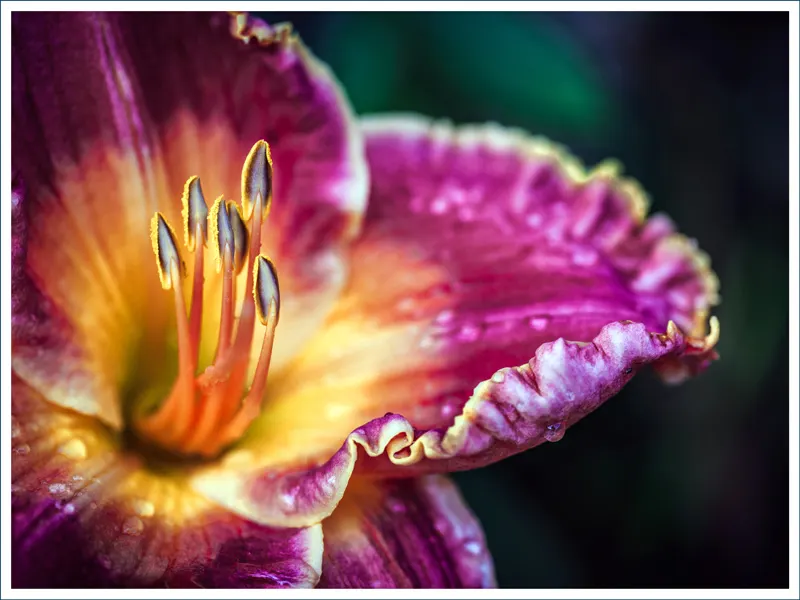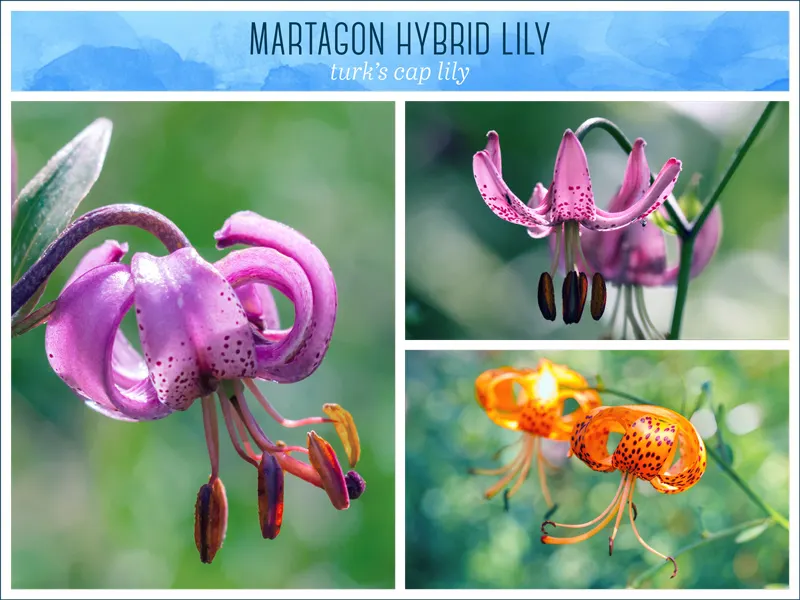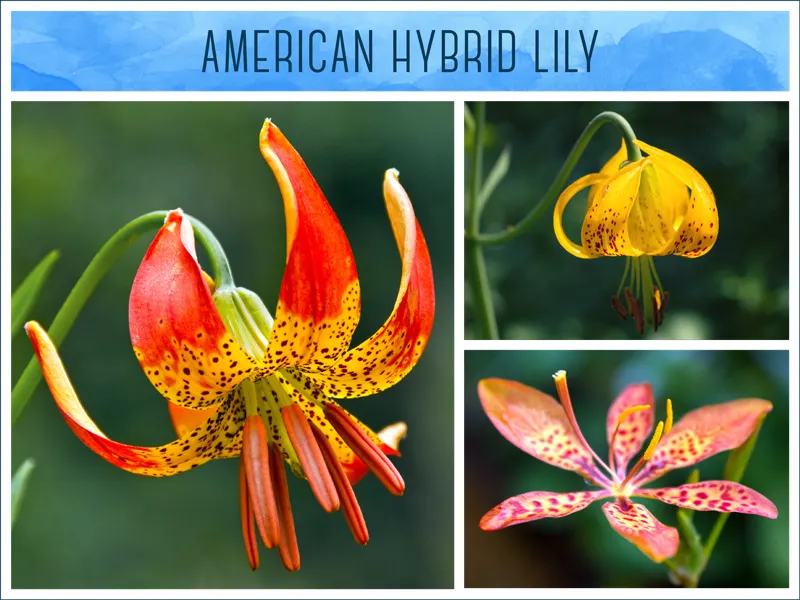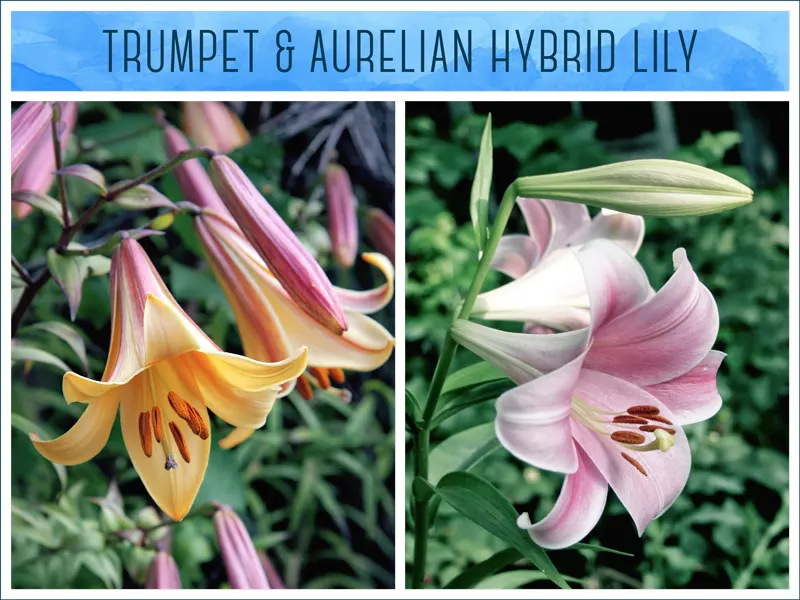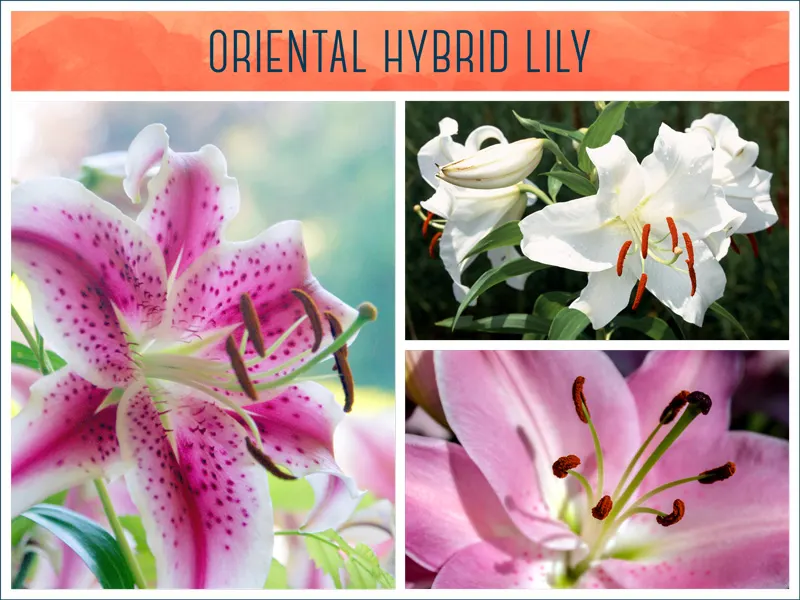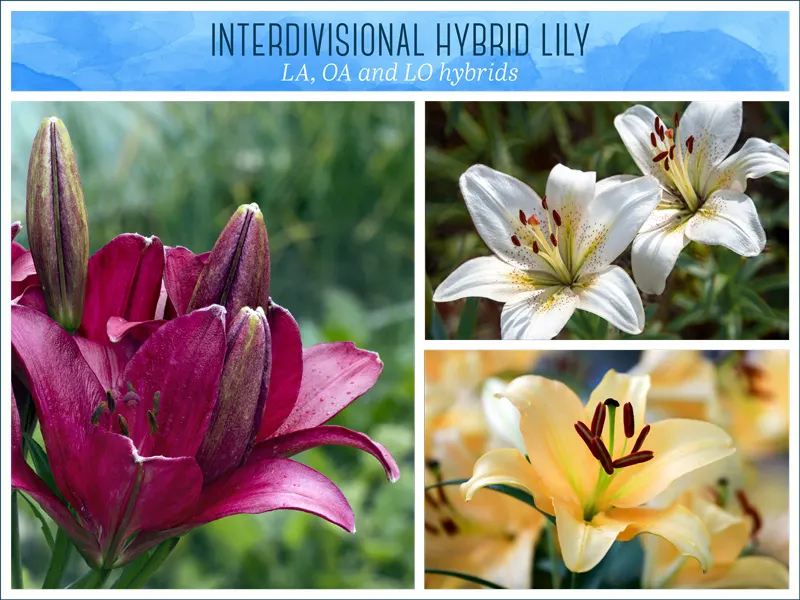June 19, 2017
Types of Lilies: A Visual Guide
Asiatic, Aurelian and Oriental hybrids are probably the most popular types of lilies found in American gardens. But did you know that there are about 90 species in the genus Lilium?
In Greek mythology, the lily flower symbolized the goddess Hera and represented purity and innocence. This association is probably one of the reasons why lilies are regarded as one of the most beautiful flowers in the world. The most popular hybrids are Asiatic, Aurelian and Oriental lilies, but did you know that there are about 90 species in the genus Lilium?
Read on to learn more about nine different divisions of lilies and a few of their common cultivars, so that you can determine which would bloom best in your garden. We also created a visual guide including the top 10 most popular types of lilies to help you identify your favorite types.
Division 1: Asiatic Hybrids
The earliest bloomers, cold-hardy Asiatic hybrids are the easiest to grow and boast the broadest color range. Their stems reach three to four feet tall and are topped with small (four to five-inch), unscented flowers. Asiatic hybrid blossoms are up facing, outfacing, or pendant. Asiatic hybrids are one most popular types of lilies for cut flowers and potted plants. This division includes L.’Sunray’, L. ‘Montreaux’, L. ‘Dreamland’, L.’Corsica’, L. ‘Symphony’, L. ‘Connecticut King’ and L. ‘Orange Pixie’ cultivars.
To extend the life of your cut lilies, harvest them from your garden when the lower buds show color but are not yet open. If shopping for a bouquet, be sure to pick one that has plenty of buds. Remove the bottom leaves and cut at a 45-degree angle. Be sure to change the water in the vase every few days or use a floral preservative.
Division 2: Martagon Hybrids
Also known as Turk’s Cap lilies, Martagon hybrids produce small, downward-facing flowers and whorled leaves. Another early bloomer, these tall lilies thrive in cool weather and shade as opposed to hot or humid climates. While they may have trouble adjusting to a new garden, these hybrid lilies will thrive once established.
The first recognized Martagon hybrid is called ‘Marhan’ (L. x dalhansonii), which was cultivated in the Netherlands in 1891. The ‘Backhouse’ hybrids were created in England towards the end of the 20th century, and the ‘Paisley’ hybrids are a rare heritage variety.
Division 3: Candidum Hybrids
The first mention of lilies dates back about 4,000 years and refers to a pure white version of the Madonna lily (L. candidum). Artifacts depicting this lily have been found in ancient cities of Crete, Greece, and Mesopotamia. Native to the Balkans and the eastern Mediterranean, this division includes most European varieties. It blooms from late spring to early summer and produces fragrant white lilies with a yellow base.
‘June Fragrance’ is the most notable cultivar in this division. It is a cross between L. candidum salonikae and L. monadelphum, and this new hybrid has since been used as a parent to create newer hybrids.
Division 4: American Hybrids
American hybrids are derived from wild lilies native to North America. They bloom in late spring (May to mid-June) in warm climates and midsummer (end of June to early July) in cooler climates.
On the west coast, you’ll find the Tiger Lily (L. columbianum) and Panther Lily (L. pardalinum). The east coast is where you’ll find the Canada Lily (L. canadense), Turk’s Cap Lily (L. superbum) and Philadelphia Lily (L. philadelphicum). The ‘Bellingham’ hybrids are the most well-known American hybrid cultivars.
Division 5: Longiflorum Hybrids
Longiflorum is commonly known as an Easter Lily and used for Easter decoration. This fragrant lily is pure white with large (six to seven inches) trumpet-shaped flowers. It is native to Japan and Taiwan, and based on Japanese writings, dates back to at least the 17th century.
While it is easily raised from seed, it is not hardy in a garden and must be given a protected location to bloom. It is almost exclusively grown in containers in North America. Popular cultivars in this division include L. ‘Nellie White’, ‘Ace’, and ‘White America’.
Division 6: Trumpet and Aurelian Hybrids
Trumpets and Aurelians are classified in the same division. They prefer full sun and bloom from mid to late summer (July to August). This division is not frost hardy, so in cooler climates, you’ll want to grow these hybrids in containers.
Aurelians inherit their hardiness from the species L. henryi and are easy to grow. Aurelian sunbursts and flares (L. henryi crossed with trumpets) bloom later, have more willowy stems (often reaching 60 inches or more), and sometimes produce secondary/tertiary buds for a long season. The most notable cultivars in this division are L. ‘Black Magic’, L. ‘Black Dragon’, L. ‘Royal Gold’ and L. ‘Pink Perfection’.
Division 7: Oriental Hybrids
Oriental hybrids are derived from crossing species lilies such as L. auratum and L. speciosum. These lilies can reach heights of five feet, and have large blooms (six to eight inches) with recurved petals and strong, upright facing flowers. Their bloom time starts in late summer and can even last into the fall, although they tend to be at their showiest in August. If your soil is alkaline, you’ll want to grow these hybrids in containers.
In part due to their strong fragrance, they are among the most popular of cut flowers. Favorite Oriental hybrid cultivars are the L. ‘Casa Blanca’, L. ‘Star Gazer’ and L. ‘Mona Lisa’.
Division 8: Interdivisional Hybrids
These varieties are created by crossing plants from the other seven divisions. LA hybrids are the result of crossing L. longiflorum with Asiatic varieties, which produces large flowers (four to seven inches) that are mostly flat and have a slight fragrance.
OT hybrids involve crossing Oriental lilies with Trumpet/Aurelian lilies for robust and durable hybrids that produce large (six to ten inches), heavily scented, upward-outward facing flowers. LO Hybrids cross L. longiflorum and one or more oriental hybrid cultivars to produce large flowers (six to ten inches) which are fragrant, outward-facing and trumpet-shaped with curved petals.
Division 9: Species
The lilies in this division are the wild parents of the first eight hybrid groups. Native lilies are found in temperate climates in North America, Europe, and especially Asia. In the wild, lilies mainly propagate from their seeds. Despite the fact that they can grow in the wild, they can be harder to grow than hybrids in gardens.
Lily Growing Tips
Lilies have a growing season that lasts from mid-spring until late autumn, with bloom times depending on the variety. Bulbs should be planted in the spring or fall, amongst shorter flowers that will help support their long stems which can range from two to ten feet tall to support their large showy blooms that nod downward or look to the sky.
Some varieties are easily grown from seed, such as longiflorum hybrids, but lily flowers can take up to four years to bloom. How they will perform in your garden depends on the variety; some prefer shade, some prefer sun. Some varieties, like Species and American hybrids, are harder to grow.
Of course, if you have a special event coming up (or don’t possess a green thumb), you don’t have to wait for your lilies to bloom in the garden. Stunning, elegant lily bouquets can be delivered to your home any time of the year, at a moment’s notice. With their bright colors, delicate shapes and renowned fragrance, lilies add drama to any special occasion.
10 Most Popular Types of Lilies
To help you choose your favorite types of lilies, we created a handy guide below which features the top 10 most popular types.
Sources:
wikipedia.org 1, 2, 3, 4, 5 | lilies.org 1, 2 | gardeningknowhow.com | floridata.com | sfheart.com | ipm.missouri.edu | missouribotanicalgarden.org | gardenia.net | ufdcimages.uflib.ufl.edu | learn2grow.com | pacificbulbsociety.org | elmaskincare.com | homeguides.sfgate.com | birdsandblooms.com | lilynook.mb.ca | bdlilies.com

